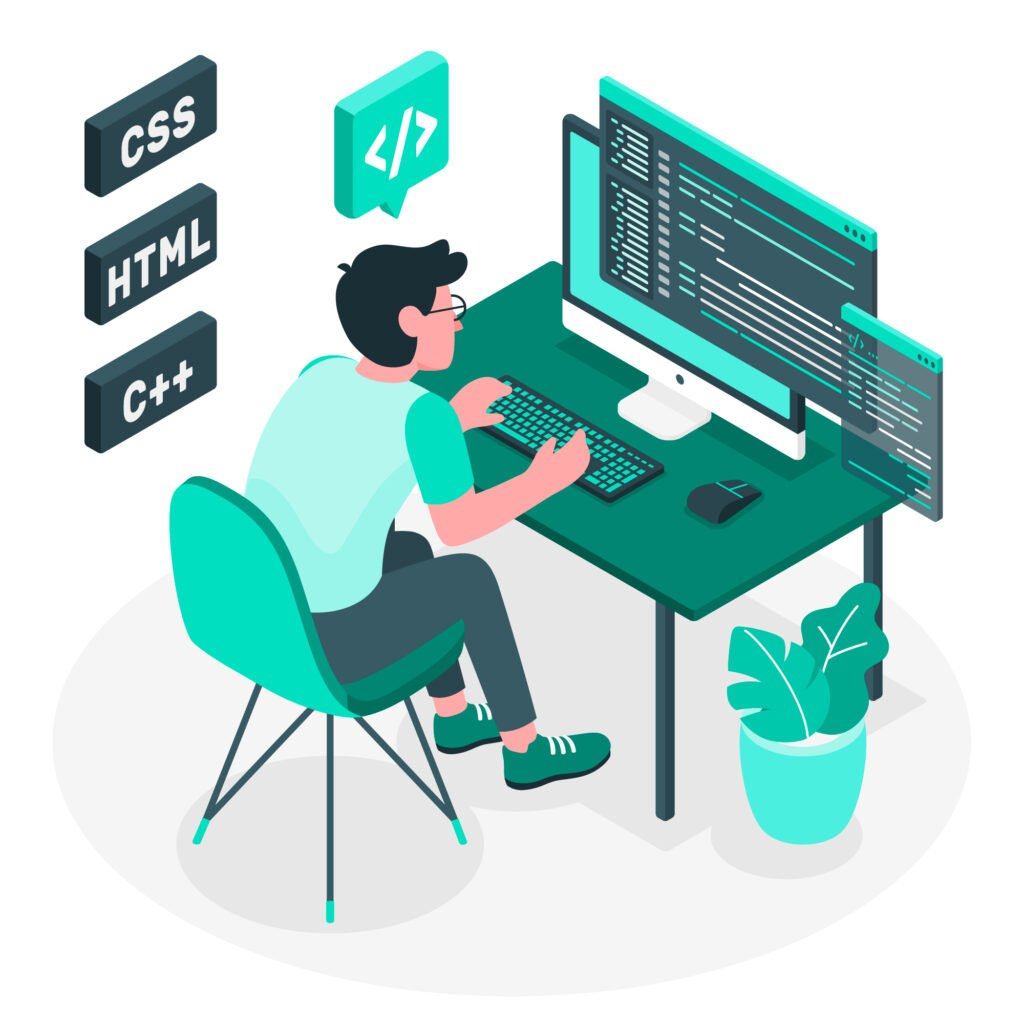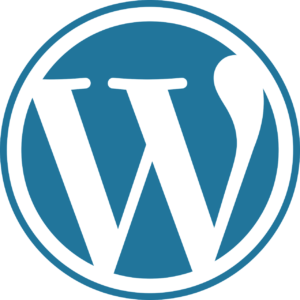
What Is Website Development?
Website development is the process of creating, designing, and maintaining websites to ensure they function smoothly and provide an engaging user experience. In today’s digital era, having a well-developed website is essential for businesses, organizations, and individuals to establish an online presence, showcase their services, and build credibility. A professionally designed website not only enhances user experience but also drives traffic, boosts engagement, and supports long-term business growth.
Getting Started
The website development niche requires little to no initial investment. However, if you want to publish your website online and make it accessible to users, you may need to purchase a domain name and hosting. These small investments can help you showcase your work effectively and establish a strong online presence.
How Much Can You Earn with Website Development Annually?
Website development is a high-demand skill with earnings that increase as you gain experience. Here’s a breakdown of earnings at different experience levels:
🔹 Entry-Level Web Developers
💰 Annual Earnings: $40,000 – $65,000
📌 Skills & Tasks:
Build basic websites with HTML, CSS, JavaScript or WordPress.
Learn responsive design & front-end frameworks.
Use Git & GitHub for version control.
🔹 Mid-Level Web Developers
💰 Annual Earnings: $65,000 – $100,000
📌 Skills & Tasks:
Work with databases (MySQL, MongoDB)
Build dynamic websites using APIs & JavaScript frameworks
Optimize performance & security
🔹 Senior Web Developers
💰 Annual Earnings: $100,000 – $150,000+
📌 Skills & Tasks:
Lead development teams & large-scale projects
Improve website security & scalability
Work on progressive web apps (PWAs)

WordPress is a website-building platform that allows you to create and manage websites without needing coding skills. It’s the most popular content management system (CMS) in the world, powering over 40% of websites globally.
What can I create with WordPress?
With WordPress, you can create a blog to share your ideas, build a professional business website, set up an online store to sell products using tools like WooCommerce, showcase your work with a portfolio site, develop membership or community websites.
Why is WordPress useful?
It’s beginner-friendly (no coding needed), customizable with themes and plugins, SEO-friendly for better search visibility, scalable to grow with your needs, and cost-effective since it’s free with affordable hosting options.
Can I practice building websites in WordPress for free?
Yes, you can practice WordPress for free by using the WordPress.com free plan to create a basic site. This allows you to explore features and learn website building without paying for hosting or a domain.
Where can I find tools to host my website after developing it?
You can use Hostinger for reliable and affordable web hosting. They offer fast, secure hosting options, including shared, VPS, and cloud hosting, with great customer support. Hostinger also provides WordPress-specific hosting, free domain, and SSL certificates, making it an excellent choice to host your website after development.
Where to Learn?
YouTube Tutorial: How To Make A WordPress Website In 2024 (Tutorial)

Hostinger is an affordable web hosting provider offering fast and reliable services like shared, VPS, and cloud hosting. Known for its easy setup, great customer support, and competitive pricing, Hostinger also provides WordPress hosting, free domains, and SSL certificates to keep your website secure and running smoothly.
Learn Hostinger on YouTube (here).

Essential Physical Tools for Website Development
Building a website is more than just writing code—it’s about creating a seamless, efficient workflow that allows you to bring your ideas to life. To do this, you need the right tools and equipment. Whether you’re a beginner or a seasoned developer, having a well-equipped workspace can make a huge difference in your productivity and creativity. In this guide, I will walk you through the essential physical tools every web developer should consider, along with some nice-to-have additions to elevate your setup. Let’s dive in!
Basic Equipment (Must-Have)
✅Computer/Laptop: Your computer is the backbone of your web development work. Whether you prefer a laptop for portability or a desktop for power, make sure your machine has enough processing power and RAM to handle coding, designing, and testing websites.
What to Look For:
🔹Processor: Opt for at least an Intel i5 or AMD Ryzen 5 for smooth performance.
🔹RAM: 16GB is ideal for multitasking, but 8GB can work for lighter tasks.
🔹Storage: An SSD (Solid State Drive) is highly recommended for faster load times.
Popular Options:
🔸Apple MacBook: A favorite among developers for its sleek design and powerful performance.
🔸Dell XPS 15: A Windows-based laptop with a stunning display and excellent build quality.
✅High-Speed Internet: A stable and fast internet connection is non-negotiable for web developers. Whether you’re downloading resources, uploading projects, or collaborating with a team, slow internet can be a major bottleneck.
What to Look For:
🔹Speed: Aim for at least 100 Mbps for smooth browsing and file transfers.
🔹Reliability: Look for providers with minimal downtime and good customer support.
Popular Options:
🔸TP-Link: A mesh Wi-Fi system that ensures strong coverage throughout your workspace.
🔸Google Wifi: Another great option for high-speed, reliable internet.
✅Monitor: A high-resolution monitor (or dual monitors) can significantly improve your workflow by allowing you to multitask efficiently. Whether you’re coding, designing, or debugging, a larger screen can make a world of difference.
What to Look For:
🔹Resolution: 4K monitors are ideal for detailed work, but 1080p can suffice for basic tasks.
🔹Size: 27 inches is a sweet spot for most developers.
Popular Options:
🔸Dell UltraSharp U2723QE: A 27-inch 4K monitor with excellent color accuracy.
🔸LG UltraFine: A budget-friendly 4K monitor with USB-C connectivity.
✅External Storage: Backing up your work is crucial, and an external hard drive or SSD ensures that your website files and important documents are safe and easily accessible.
What to Look For:
🔹Capacity: 1TB is a good starting point for most developers.
🔹Speed: SSDs are faster and more durable than traditional hard drives.
Popular Options:
🔸SanDisk: A durable and fast SSD for storing large files.
🔸Seagate: A reliable and affordable external hard drive.
✅Headphones: Noise-canceling headphones or a quality headset can help you stay focused, especially if you work in a noisy environment or need to attend virtual meetings.
What to Look For:
🔹Noise Cancellation: Active noise cancellation (ANC) is a must for blocking out distractions.
🔹Comfort: Look for lightweight designs with cushioned ear pads.
Popular Options:
🔸Sony WH-1000XM5: Industry-leading noise cancellation and sound quality.
🔸Bose Headphones: Comfortable and great for long work sessions.
✅Ergonomic Furniture: Comfortable furniture is essential for long work hours. Investing in an ergonomic chair and desk can help prevent strain and boost productivity.
What to Look For:
🔹Adjustability: Look for chairs and desks that can be adjusted to fit your body and workspace.
🔹Support: Proper lumbar support is key for maintaining good posture.
Popular Options:
🔸Ergonomic Desk Chair: A premium ergonomic chair designed for comfort and support.
🔸Uplift V2 Standing Desk: A height-adjustable desk for a healthier work setup.
Additional Equipment (Nice-to-Have)
✅Keyboard & Mouse: A comfortable keyboard and mouse are essential for long coding sessions. Ergonomic designs can help reduce strain and improve your overall productivity.
What to Look For:
🔹Keyboard: Mechanical keyboards are popular for their tactile feedback and durability.
🔹Mouse: Look for one with customizable buttons and smooth tracking.
Popular Options:
🔸Logitech MX Keys S Combo: A high-precision mouse designed for productivity.
✅UPS (Uninterruptible Power Supply): A UPS protects your devices from power surges and provides backup power in case of outages, ensuring your work isn’t interrupted.
What to Look For:
🔹Battery Life: Choose a UPS with enough backup time to save your work and shut down safely.
🔹Surge Protection: Ensure it has built-in surge protection to safeguard your devices.
Popular Options:
🔸CyberPower CP1500PFCLCD: A reliable UPS with surge protection and battery backup.
✅Webcam: For online meetings or video calls with clients, a good webcam and microphone can help you maintain clear communication.
What to Look For:
🔹Resolution: 1080p is ideal for crisp video quality.
🔹Microphone: Built-in noise cancellation is a plus.
Popular Options:
🔸Anker PowerConf: A great option for streamers and developers who need crisp video quality.
✅Docking Station or USB Hub: If you’re using a laptop, a docking station or USB hub helps you easily connect additional devices and peripherals.
What to Look For:
🔹Ports: Ensure it has enough USB, HDMI, and other ports for your needs.
🔹Compatibility: Check that it’s compatible with your laptop’s operating system.
Popular Options:
🔸HP USB: A versatile docking station with multiple ports.
🔸Anker USB: A compact and affordable option for expanding connectivity.
✅Surge Protector Power Strip: A surge protector provides multiple outlets while protecting your devices from electrical surges.
What to Look For:
🔹Joule Rating: A higher rating means better protection.
🔹Number of Outlets: Choose one with enough outlets for your devices.
Popular Options:
🔸Belkin 12-Outlet Surge Protector: A durable power strip with ample outlets.
✔️Affiliate Disclosure
As an Amazon Associate, I earn from qualifying purchases. This means that if you buy through my links, I may receive a small commission at no extra cost to you. This helps support the site and allows me to continue providing valuable content for web developers like you!
7 Essential Tips and Skills to Succeed in Website Development
Website development is a rewarding skill, but it takes more than just coding to succeed. Whether you’re a beginner or looking to level up, here are 7 essential tips and skills to help you thrive in web development.
1. Master the Core Technologies
Start with the basics:
HTML for structure.
CSS for styling.
JavaScript for interactivity.
These are the foundations of every website.
2. Build Real-World Projects
Theory is great, but practice is key. Start small:
Create a portfolio website.
Build a blog or landing page.
Experiment with responsive designs that work on all devices.
Why It Matters: Real projects help you understand how everything fits together.
3. Learn Version Control with Git
Git is a must-have skill for developers. It helps you:
Track changes in your code.
Collaborate with others.
Avoid losing your work.
4. Understand Responsive Design
With most users on mobile, your site must look great on all screens. Learn:
CSS Flexbox and Grid for layouts.
Media queries to adjust designs for different devices.
5. Explore Frameworks and Libraries
Speed up development with tools like:
Bootstrap or Tailwind CSS for styling.
React or Vue.js for dynamic interfaces.
Why It Matters: Frameworks save time and make your code more efficient.
6. Get Comfortable with WordPress
WordPress powers over 40% of websites. Learn how to:
Customize themes.
Use plugins like Yoast SEO or Elementor.
Manage content without coding.
7. Join the Developer Community
Web development is a team sport. Connect with others:
Ask questions on Stack Overflow.
Share your work on GitHub or LinkedIn.
Join forums like Reddit’s r/webdev.
Why It Matters: Communities provide support, feedback, and inspiration.
